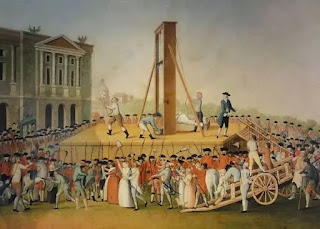Character and role of Madame Defarge in A Tale of Two Cities
The charm of Dicken’s A Tale of Two Cities lies not only in the magic of the plot but also in its deft characterization. Madame Defarge, the wife of M. Defarge, the wine-seller, is the most characteristic female figure here. If Lucie is the heroine, she is the evil genius of the work. She was brought up among the fishermen on the sea-coast with the result that she became strong, capable of undergoing fatigue, and thus quite fit for being the leader of the wild women who played prominent parts in the French Revolution.
At our first meeting with her in Defarge’s wine shop, we find her to be the presiding genius there. She has a keen eye, shrewd common sense, a fearless temper, readiness to rise to the occasion, and wonderful passion-things that are needed in a successful revolutionary. She knows that the Revolution is coming and registers people’s dooms in her peculiar way of knitting. When the Revolution does come, she comes forward as a Revolutionary leader, playing her parts.
When the Revolution comes, the wine shop serves as a focus of all political activities. Defarge becomes the leader of the mob that storms the Bastille, and Madame Defarge becomes the leader of the women bent on killing. It was she who cut off the head of the old governor of the Bastille in a ghastly manner. During the Revolution, she seems to move like a shadow of Vengeance. She casts her shadow over that innocent woman while her husband’s letter is delivered to her and read. She appears before the revolutionary tribunal as one of the accusers of Charles Darnay; and, but for the lucky escape of Dr. Manette, Lucie, and her daughter, she would have brought about their dooms. She was not satisfied with bringing about the execution of Lucie’s husband-she would, if she could, have got the innocent wife and child executed. This revengeful woman dies the death not of a heroine, but of an ordinary wretched creature, being killed by the hands of a virtuous but hitherto harmless woman, Miss Pross.
The life, as well as the death of Madame Defarge, is in striking contrast to the life and death of Sydney Carton. Hers was a life of petty revenge, petty selfishness, and jealousy. His was a life of noble sacrifice and chivalry. After a stormy career of revenge of blood and iron, she met an appropriate death-a coward’s fate at the hand of a virtuous woman who never before had harmed a single creature. Sydney Carton, on the other hand, died a martyr’s death-the death of a man who nobly risked his life to save the lives of those he loved with the unselfish nobleness of heart.
